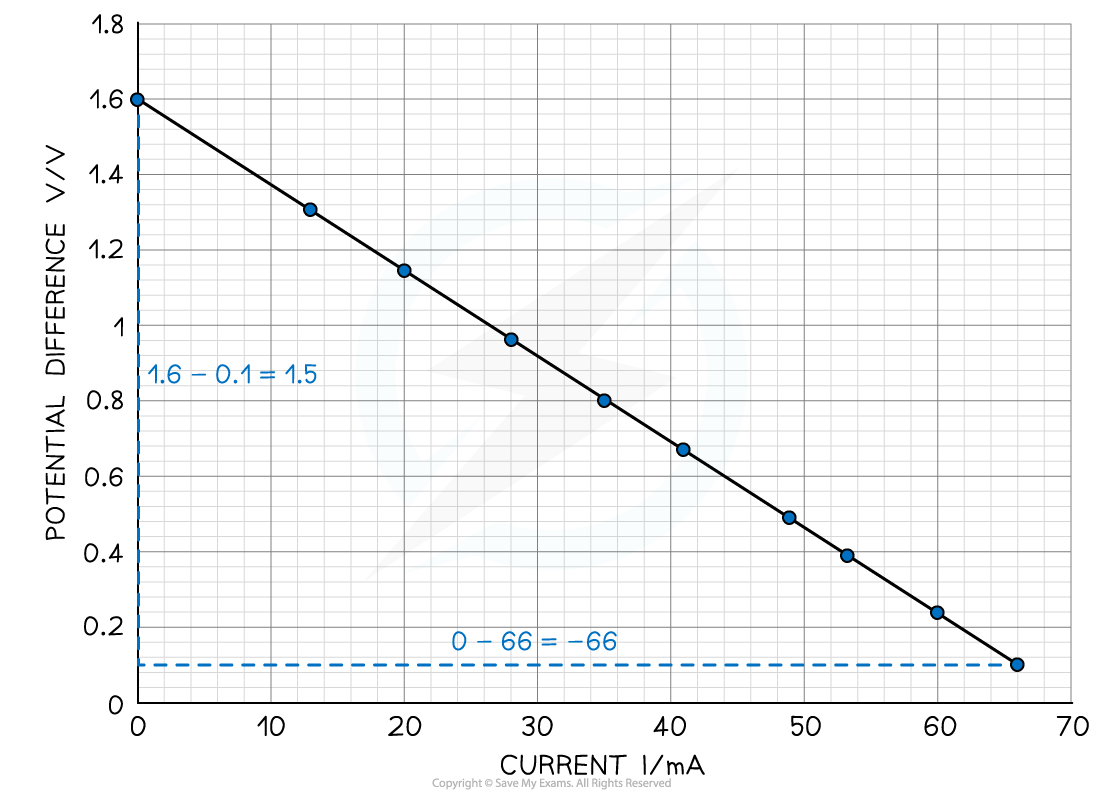Electromotive Force
- When charge passes through a power supply such as a battery, it gains electrical energy
- The electromotive force (e.m.f) is the amount of chemical energy converted to electrical energy per coulomb of charge (C) when charge passes through a power supply
- e.m.f is measured in Volts (V)

Definition of e.m.f with regards to energy transfer
- e.m.f is also the potential difference across the cell when no current is flowing
- e.m.f can be measured by connecting a high-resistance voltmeter around the terminals of the cell in an open circuit

e.m.f is measured using a voltmeter connected in parallel with the cell
EMF & Potential Difference
- The difference between potential difference and e.m.f is the type of energy transfer per unit charge

Definition of potential difference with regards to energy transfer
- When charge passes through a resistor, for example, its electrical energy is converted to heat in the resistor
- The resistor, therefore, has a potential difference across it
- Potential difference describes the loss of energy from charges; ie. when electrical energy is transferred to other forms of energy in a component
- e.m.f. describes the transfer of energy from the power supply to electrical charges within the circuit
Exam Tip
Although voltage and potential difference are the same thing, make sure not to confuse them with e.m.f, which is slightly different!


 Determine:
Determine:




 Plot a graph of these results and determine the e.m.f. and the internal resistance directly from the graph.
Plot a graph of these results and determine the e.m.f. and the internal resistance directly from the graph.

 Step 3: Determine the e.m.f. and the internal resistance from the graph
Step 3: Determine the e.m.f. and the internal resistance from the graph
